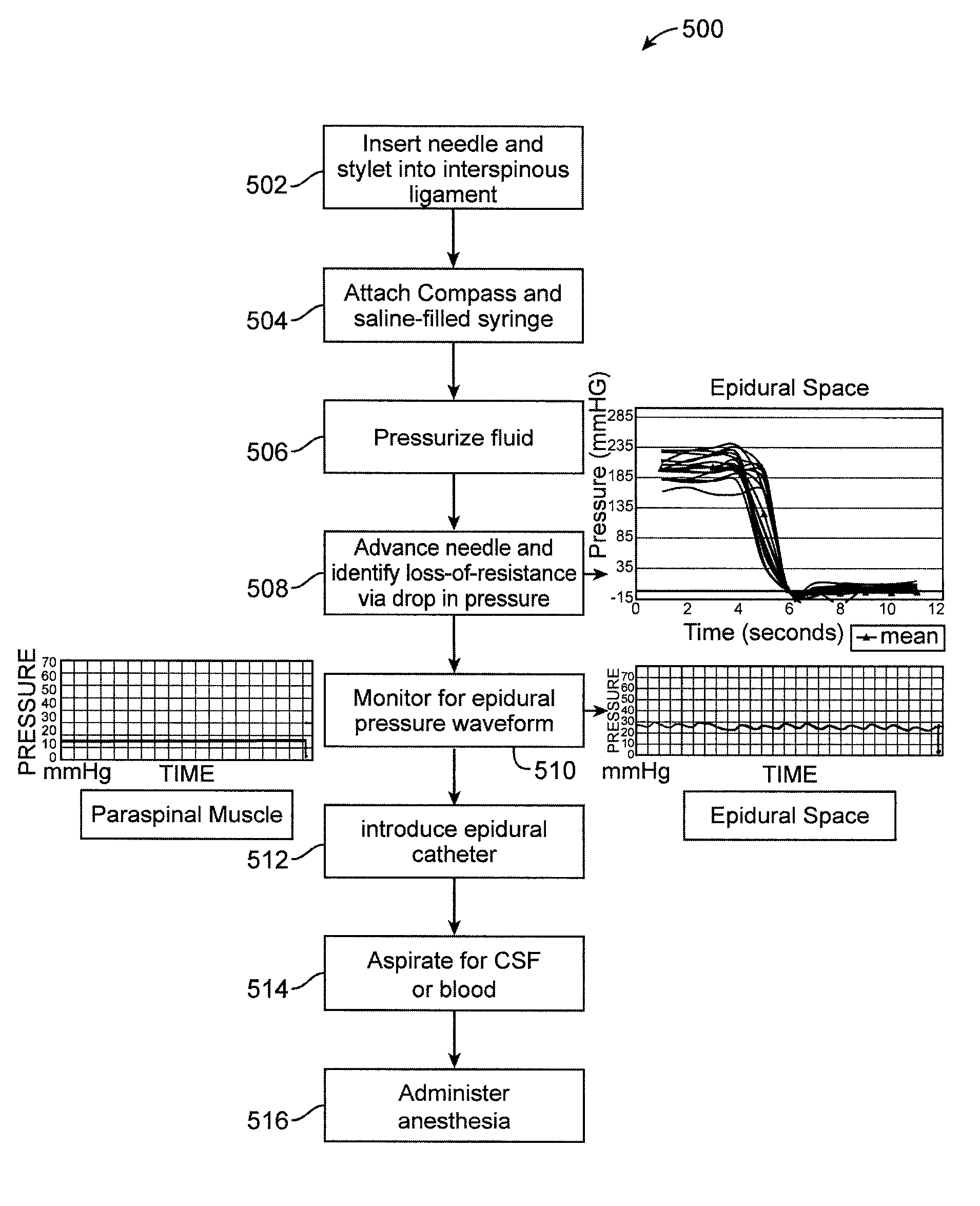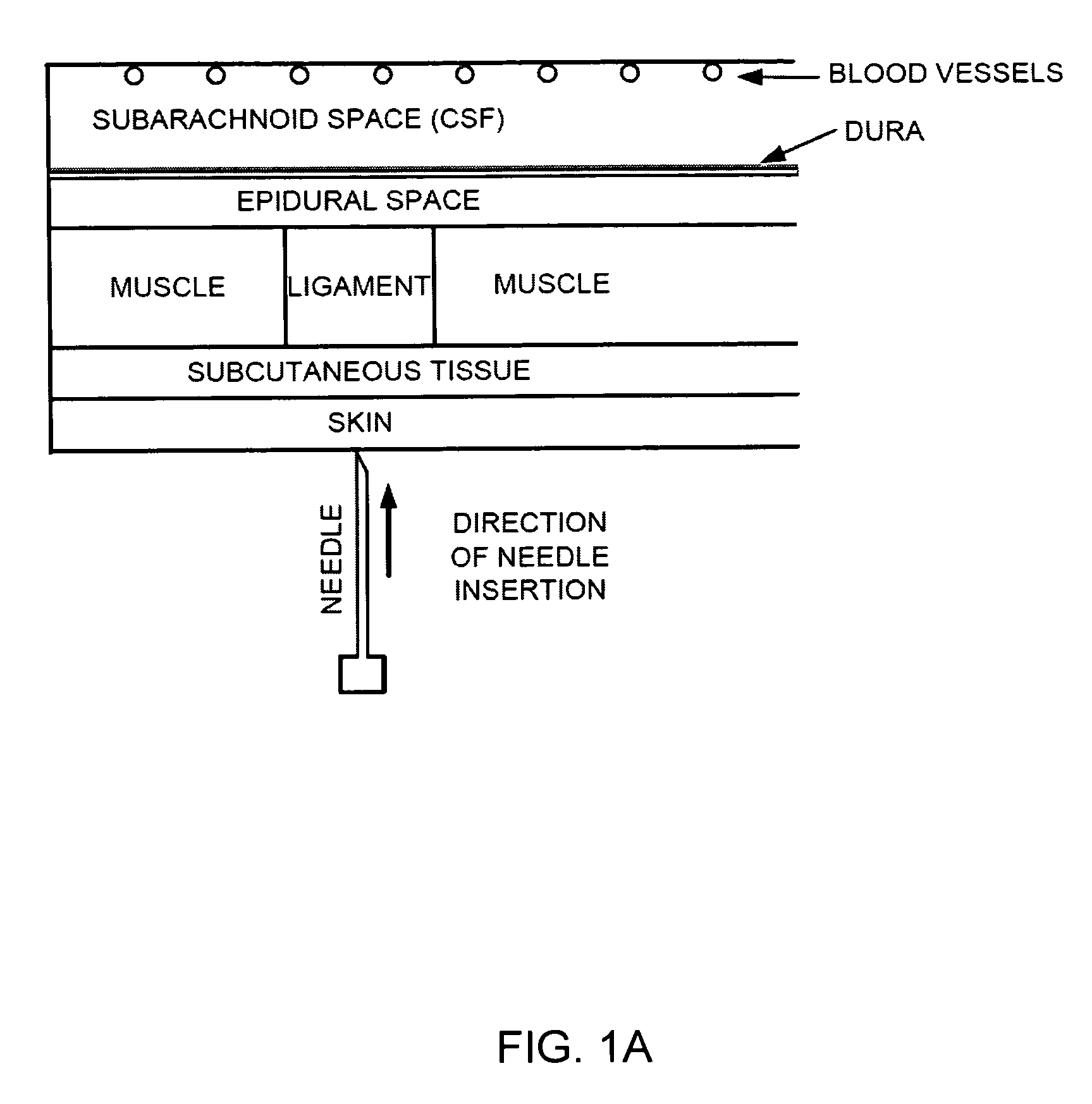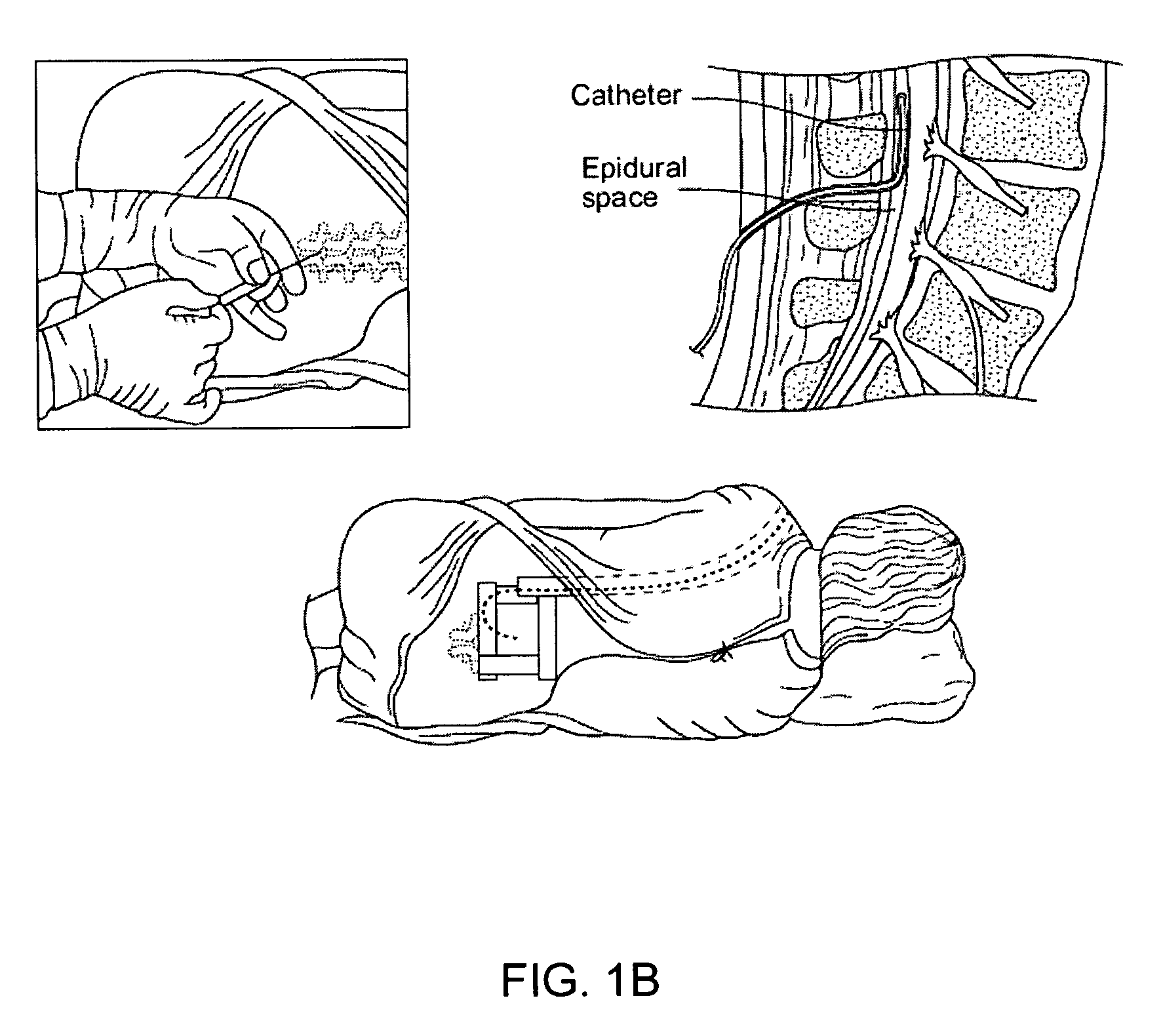Spinal canal access and probe positioning, devices and methods
a technology for positioning probes and access to spinal canals, applied in the direction of person identification, catheters, applications, etc., can solve the problems of cerebrospinal fluid (csf) leakage, and not uncommon complications due to faulty positioning or placement of probes or catheters
- Summary
- Abstract
- Description
- Claims
- Application Information
AI Technical Summary
Benefits of technology
Problems solved by technology
Method used
Image
Examples
Embodiment Construction
[0035]The present invention provides methods and structures for detecting and / or facilitating positioning of a probe in the spinal canal of a patient, including probe positioning, monitoring and the like during a spinal canal access procedure, such as a lumbar puncture or epidural access procedure.
[0036]General aspects of a spinal canal access procedure and basic tissue anatomy are described with reference to FIGS. 1A through 1C. The spinal canal includes both the epidural space as well as the subarachnoid space containing CSF, with those two spaces separated by the dura. In an access procedure, a needle (or other probe) is inserted through the skin and subcutaneous tissue and into a tough ligament in the patient's back. In a lumbar puncture procedure, the needle advances through the ligament and into the epidural space, and further through the dura into the subarachnoid space for access to the CSF (e.g., FIGS. 1A and 1C). Precision and care is required in needle positioning, not on...
PUM
 Login to View More
Login to View More Abstract
Description
Claims
Application Information
 Login to View More
Login to View More - R&D
- Intellectual Property
- Life Sciences
- Materials
- Tech Scout
- Unparalleled Data Quality
- Higher Quality Content
- 60% Fewer Hallucinations
Browse by: Latest US Patents, China's latest patents, Technical Efficacy Thesaurus, Application Domain, Technology Topic, Popular Technical Reports.
© 2025 PatSnap. All rights reserved.Legal|Privacy policy|Modern Slavery Act Transparency Statement|Sitemap|About US| Contact US: help@patsnap.com



